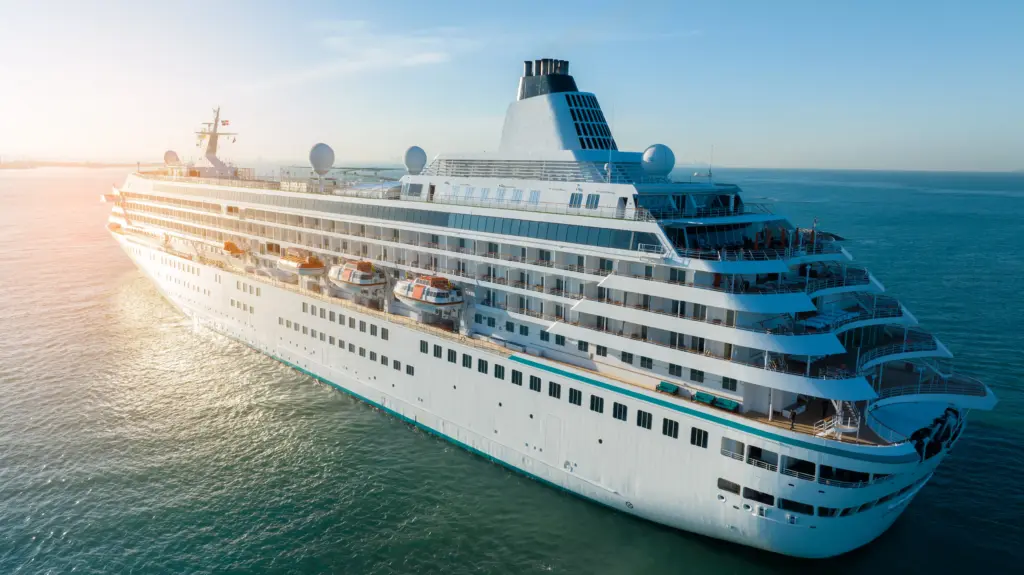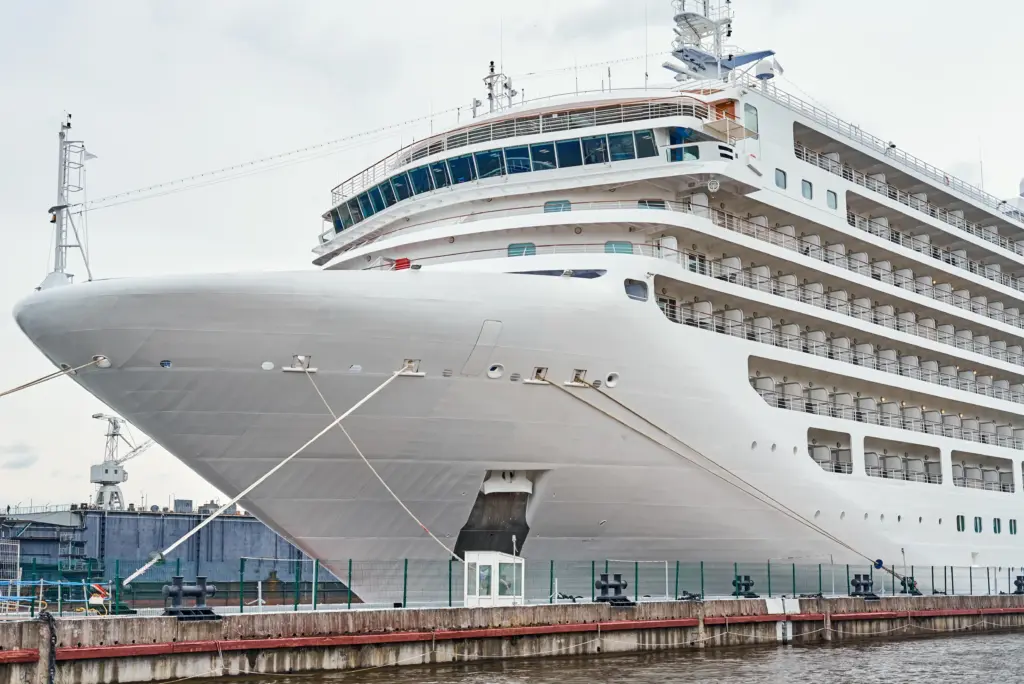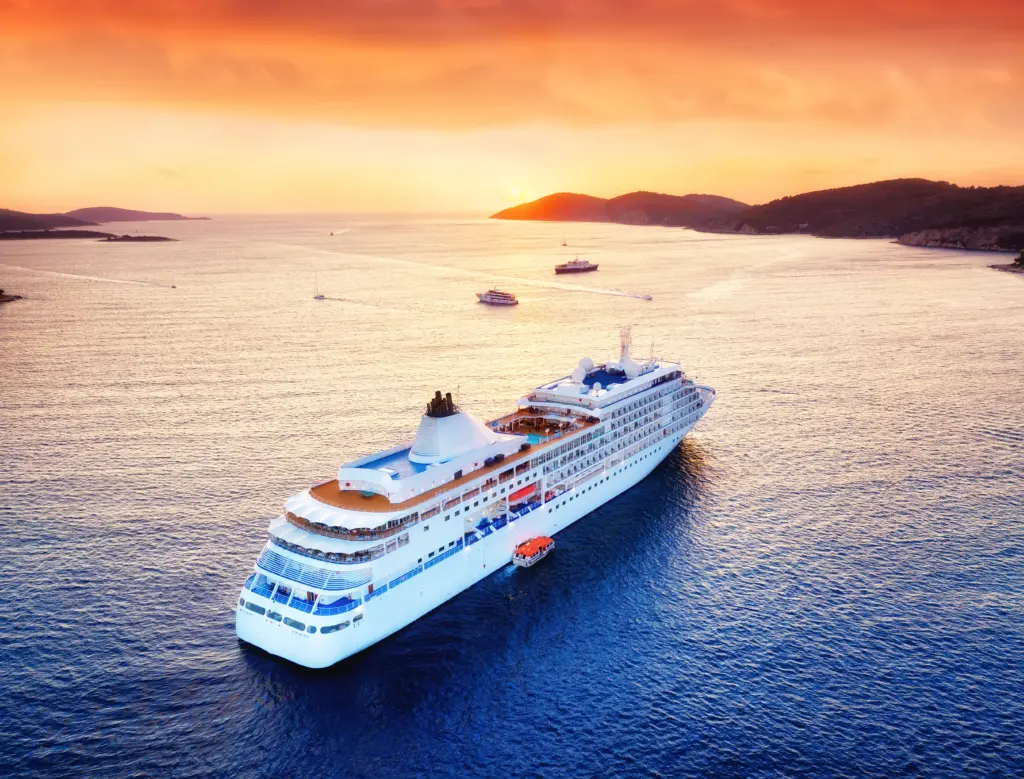Every year, millions of people travel the world by sea, enjoying the luxury and relaxation of modern cruise vacations. Yet many first-time travelers quietly ask the same question before boarding: can cruise ships tip over? The idea of a ship losing balance in open water can sound intimidating, especially when massive vessels tower above the ocean surface. The truth is that modern cruise ships are built to remain incredibly stable, even in rough seas, thanks to centuries of innovation in naval engineering and international safety standards.

Stability at Sea
Stability is one of the core principles behind ship design. A cruise ship’s balance depends on its center of gravity and center of buoyancy. Engineers carefully calculate these points to ensure that the vessel naturally rights itself if tilted by waves or wind. The heavy machinery, fuel, and ballast tanks are placed deep within the hull to lower the center of gravity. This design creates what naval architects call a “righting moment”, a natural force that pushes the ship upright whenever it leans.
How Cruise Ships Are Designed to Stay Upright
When people ask can cruise ships tip over, the answer lies in how they are constructed. These ships are designed with wide beams and hull shapes that distribute weight evenly across the water. The deeper portions of the hull contain thousands of tons of ballast, dense material that stabilizes the vessel. Even during strong winds or large waves, the combination of weight distribution and hydrodynamic design prevents excessive tilting. In short, cruise ships may sway, but they are engineered to resist capsizing under normal conditions.
The Role of Stabilizers
Modern cruise ships use advanced stabilizer systems to further enhance comfort and safety. These wing-like structures extend from the sides of the hull below the waterline and counteract rolling motions caused by waves. Controlled by sensors and computers, stabilizers adjust automatically to changing sea conditions. According to the International Maritime Organization (IMO), stabilization technology has reduced passenger discomfort and improved safety dramatically over the past few decades.

Weather Challenges and Navigation
Rough weather and high winds can cause noticeable movement, but captains are trained to navigate around major storms. Advanced meteorological tools and satellite data allow cruise lines to track weather patterns in real time. Ships can change course or speed to avoid dangerous conditions. When necessary, vessels may delay departure or reroute to safer waters. Thanks to these precautions, it is exceedingly rare for a cruise ship to face conditions that would seriously threaten its balance or stability.
Why Capsizing Is Extremely Unlikely
It would take extraordinary circumstances for a modern cruise ship to tip over. The combination of structural integrity, heavy ballast, and constant computer monitoring makes capsizing almost impossible under normal operation. Even if the ship leans due to external forces, the design ensures it rights itself quickly. The U.S. Coast Guard regularly inspects passenger vessels operating in American waters to verify compliance with stability and safety regulations. These inspections guarantee that ships meet or exceed international safety standards before sailing.
Historical Context: Rare Incidents and Lessons Learned
In over a century of passenger cruising, only a handful of ships have partially capsized, and almost all involved unique circumstances like grounding or human error. One notable case was the Costa Concordia in 2012, which tipped after striking a reef near Italy. Incidents like these are tragic but extremely rare, and they lead to even stricter global safety regulations. Every new event prompts design improvements and updated training protocols, ensuring future ships are even safer than before.

How Weight and Load Affect Stability
The distribution of cargo, passengers, and fuel plays a major role in maintaining balance. Cruise lines meticulously manage weight throughout the voyage, adjusting for fuel use, freshwater consumption, and onboard activities. Ballast systems automatically balance weight distribution as the ship moves. This dynamic control prevents instability and ensures that even subtle shifts in mass do not affect safety. When asking can cruise ships tip over, it’s reassuring to know that advanced monitoring systems are constantly adjusting for optimal equilibrium.
The Role of Crew Training
Beyond engineering, crew expertise is another layer of safety. Every officer undergoes specialized training in ship stability, navigation, and emergency response. Regular drills ensure that all staff know how to respond in extreme conditions. Safety exercises simulate fire, flooding, and loss of power scenarios to reinforce quick decision-making. Passengers also participate in mandatory safety briefings before departure, ensuring everyone aboard understands emergency procedures. Together, these measures protect lives and prevent panic even in challenging conditions.
Environmental Forces and Ocean Dynamics
Ocean swells, crosswinds, and waves are natural forces that can cause a ship to roll or pitch slightly. However, cruise ships are designed to withstand waves much larger than those typically encountered. Hull curvature and hydrodynamic resistance reduce roll angles, keeping motion within comfortable limits. Even in large storms, a cruise ship’s structure and ballast provide a self-correcting balance. Engineers test new ship models in wave simulators to guarantee stability under a wide range of conditions before construction ever begins.

Emergency Systems and Passenger Safety
Every modern cruise ship includes redundant safety systems to handle unlikely emergencies. Watertight compartments, automated bilge pumps, and backup generators ensure that flooding or power loss does not affect stability. The Safety of Life at Sea (SOLAS) convention requires ships to stay afloat even if several compartments are compromised. Life rafts and lifeboats are inspected frequently, though in reality, these are rarely used due to the industry’s exceptional safety record.
Financial and Operational Safeguards
Behind every stable voyage is significant investment. Cruise companies allocate millions toward maintenance, safety checks, and insurance. For smaller operators, access to financial solutions such as best boat fleet financing ensures that their vessels remain up to modern safety standards. Proper financing allows owners to upgrade technology, maintain balance systems, and operate efficiently without compromising safety or compliance.
Psychological Comfort for Passengers
Feeling uneasy about the size or movement of a ship is normal, especially for first-time cruisers. Understanding how stability works can greatly reduce anxiety. Ships are designed to move with the waves, not fight against them, which actually enhances safety. Slight rolling or swaying might feel strange, but it’s a sign the vessel is responding correctly to ocean conditions. Educating passengers about stability fosters confidence and allows them to relax and enjoy the experience.

Conclusion
So, can cruise ships tip over? The short answer is no; at least not under normal conditions. Modern cruise ships are masterpieces of engineering, built to remain stable through advanced design, technology, and regulation. Between intelligent ballast systems, trained crews, and global safety oversight, the likelihood of capsizing is almost nonexistent. For anyone planning to own or operate marine vessels, investing in proper safety systems and financing through Float Finance ensures smooth, secure journeys on every horizon.
